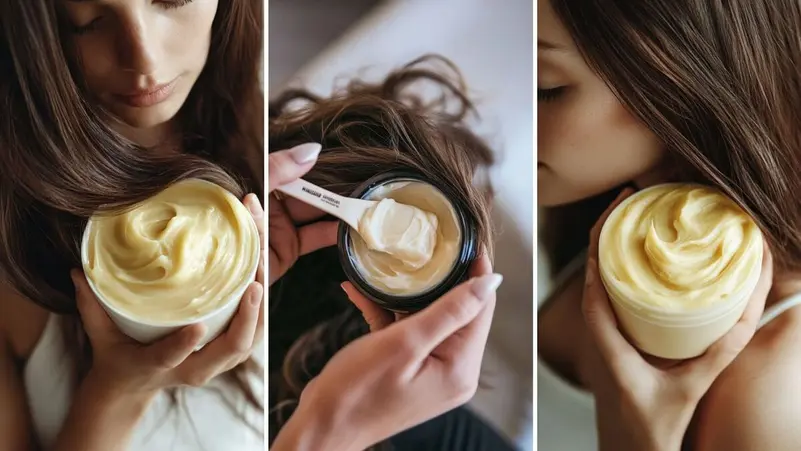Which Should You Use First: Conditioner or Hair Mask?
Al-Khamisa News Network - Gaza

Hair masks and other beauty treatments are highly effective ways to care for your hair, providing it with essential nutrients and moisture. However, these products lose much of their effectiveness when used at the wrong time. Here’s how to maximize their benefits.
Achieving ideal hair care involves adopting a routine that includes using the appropriate shampoo for your hair type, a conditioner that makes styling easier, and a mask that restores vitality.
The order in which you apply these products is just as important as choosing the right ones for your hair. A common mistake is applying the mask after the conditioner, which limits its effectiveness. It’s best to avoid this mistake.

Correct Order
Most people believe that the correct hair care routine begins with shampooing, followed by applying conditioner, then the mask, or even replacing the conditioner with a mask when the hair appears tired or lacks vitality. However, the correct sequence is to apply the mask immediately after shampooing and before the conditioner to allow its active ingredients to fully penetrate the hair fibers and provide the necessary nourishment and moisture.
This is because shampooing opens the hair cuticles and pores, facilitating deeper absorption of moisturizing, nourishing, and restorative ingredients. Applying conditioner after shampoo and before the mask seals the cuticles, preventing the mask from working fully. Conversely, applying the conditioner after the mask seals the cuticles after the nutrients from the mask have penetrated, resulting in shinier hair.
Experts recommend applying the mask immediately after shampooing, leaving it on for 3 to 20 minutes depending on your hair’s condition and needs, then rinsing thoroughly, followed by applying the conditioner before rinsing it as well. This order helps hydrate dry lengths, repair damage from excessive styling with heat tools, address brittle ends, and revitalize dull hair.

Optimal Frequency
Experts advise not to overuse masks on all hair types. Once a week is sufficient for normal and dry hair. Fine and soft hair may only need a mask once every two weeks. For very dry or damaged ends from heat or coloring, using a mask is essential. In the case of coarse hair with brittle ends and lack of vitality, a leave-in conditioner can replace the mask to keep the hair moisturized and reduce breakage during styling.
Application Tips
Experts recommend choosing a mask formulation that suits your hair’s dryness and thickness. A useful test involves wrapping a strand of hair around your finger; if it barely shows, the hair is fine, otherwise, it is thicker and more natural. Apply the mask on damp, thoroughly rinsed hair, and gently towel-dry to remove excess water, which can dilute the product and reduce its effectiveness.

• Proper amount: The right amount of mask is typically equivalent to two to four hazelnuts, just enough to keep the hair fibers damp and covered with a thin layer of product. If a creamy or white layer appears, it indicates over-application.
• Avoid the roots: Apply the mask from mid-length to ends, avoiding the scalp. If you want to treat the roots, look for a mask designed specifically for that purpose. It’s also recommended to use a natural material comb to distribute the product, as plastic combs can cause breakage. Massaging the strands after applying the mask helps the ingredients penetrate more deeply.
• Rinsing: Avoid quick-acting masks that only need a few minutes, as they contain silicones that can weigh hair down. Opt for masks that are left on for 15 to 30 minutes, then rinse thoroughly to remove any residue. For fine or damaged hair, adding a few drops of shampoo to the rinse water can help remove residual mask and prevent weighing down.






